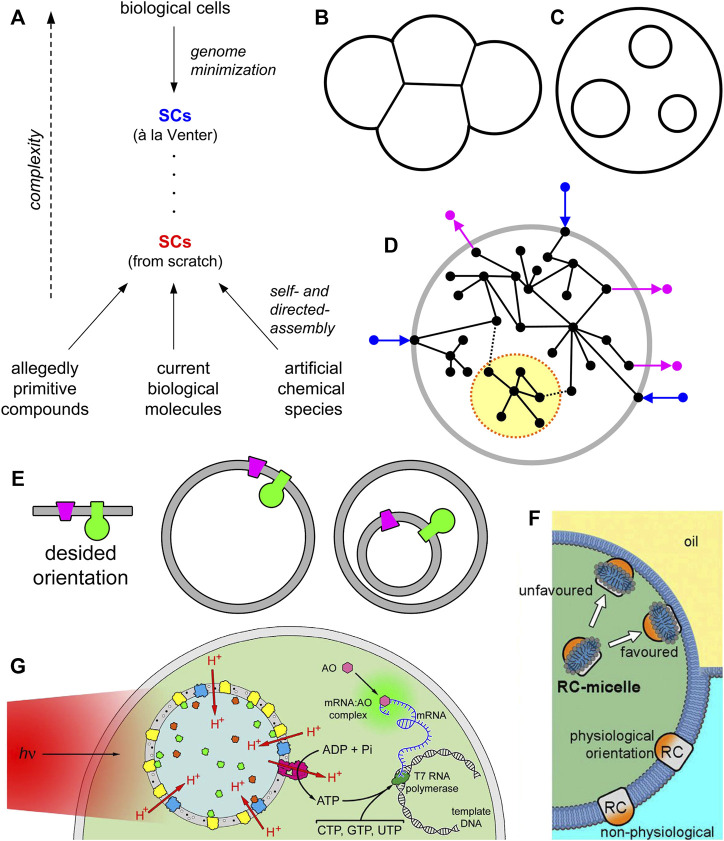FIGURE 1.
Synthetic cells (SCs) and the nested multicompartment design. (A) Schematic representation of SC research. SCs can be obtained from modern cells by a process of minimization, e.g., by designing, constructing, and insert a minimal genome in living cells. Such an approach has been pioneered by C. Venter (Gibson et al., 2010). The resulting minimal SCs are alive. Bottom-up SCs can be constructed from scratch, by employing different types of molecules (or mixtures of them). The construction grounds on self-assembly and directed-assembly processes. Up to date, bottom-up SCs are not alive and lie at a much lower complexity level when compared with SCs à la Venter. (B) “Flanked” or sidewise multicompartment SCs. (C) “Nested” multicompartment SCs, also known as multivesicular vesicles or vesosomes in liposome technology. (D) A pictorial representation of the concept of segregation (term borrowed by the dynamic systems theory) which conceptually corresponds to the idea of “module” in synthetic biology. In the dynamic chemical network that constitutes the SC (open to the environment) it is possible to indentify a sub-network whose relational links with the whole network are inferior in number, strength, and quality—because of physical or functional segregation. Note, however, that the “module” still interacts with the whole network, i.e., it is not relationally isolated from it. (E) A simplified cartoon showing that vectorial elements embedded in the membrane (or in general, in any interface) need to have a proper orientation. When such elements should be incorporated in single compartment or multicompartment SCs, their location (and mechanism of insertion) will correspondingly change dramatically. SC technology must allow the decoration of interface with vectorial elements in all possible configurations, at will. (F) Detergent-guided reconstitution of vectorial membrane proteins (MPs) in single compartment SCs from the inside. Image taken from Altamura et al. (2017) with the permission of the National Academy of Science United States ©2017. (G) Chromatophores from Rhodobacter sphaeroides can be employed as organellae-like particles inside giant vesicles, in order to construct SCs capable of producing ATP under illumination. Image taken from Altamura et al. (2021) with the permission of the National Academy of Science United States ©2021.

